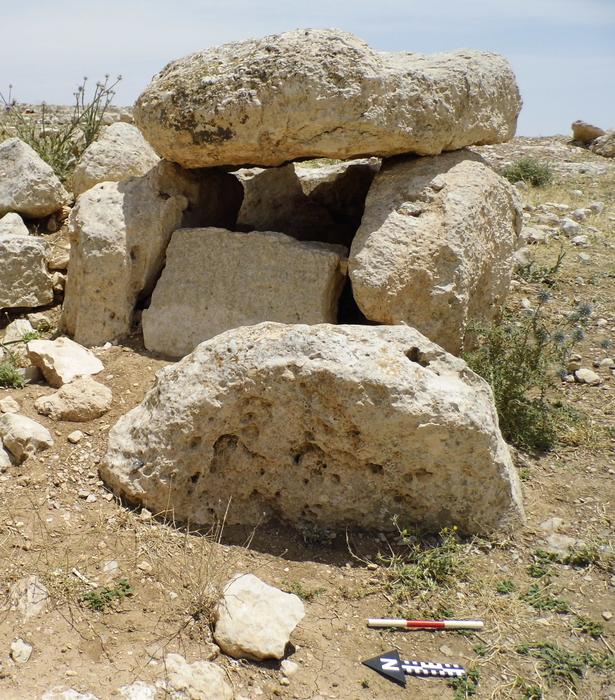Ancient societies often faced profound challenges that tested their resilience, social frameworks, and cultural identities. One captivating inquiry in archaeology concerns how early civilizations responded to crises, particularly those involving the collapse of established social orders. Recent archaeological excavations led by the University of Copenhagen at the Early Bronze Age site of Murayghat in Jordan, dating back approximately 5,000 years, have begun to illuminate this question in unprecedented ways. This site offers a remarkable window into societal reorganization at a critical historical juncture.
Murayghat emerges as a focal site precisely during the transitional period following the Chalcolithic era, which lasted roughly from 4500 to 3500 BCE. The Chalcolithic phase was characterized by flourishing domestic settlements, rich symbolic and ritual traditions, distinctive copper tools, and numerous small-scale cultic shrines. However, climatic fluctuations and increasing social stressors appear to have precipitated the decline of this culture, leading to widespread societal transformations. Murayghat thus represents a critical archaeological testimony to these environmental and social upheavals.
In stark contrast with the Chalcolithic period’s dispersed domestic settlements centered around individual or family units, the Early Bronze Age occupation at Murayghat reveals a marked shift toward ritualized communal spaces. The site is notable for its dense clusters of dolmens, which are large stone burial monuments. Accompanying these are standing stones and a number of extensive megalithic constructions. Such architectural features strongly imply a landscape organized less around daily domestic life and more around ceremonial gatherings and collective burial practices.
Archaeological evidence underscores that Murayghat functioned as a nexus for social redefinition during a time absent of centralized political authority. The monumental stone constructions likely served not only as burial sites but also as powerful territorial markers and symbolic anchors for group identity. These visible and imposing monuments may have played critical roles in maintaining social cohesion and redefining community boundaries at a time when former societal hierarchies had fractured.
Extensive surveys have documented over 95 dolmens at Murayghat, signifying a complex ritual landscape. Central to the site is a hilltop area featuring stone-built enclosures that likely had ceremonial functions, supported by the presence of carved bedrock installations. These architectural and landscape features suggest a deliberate effort to establish new social rituals, possibly as a mechanism for managing transitions and uncertainties in identity and power structure.
Material culture recovered through excavations further illuminates the ritualized nature of Murayghat’s use. Finds include Early Bronze Age pottery, large communal bowls that may have been used for collective feasting, grinding stones, flint tools, animal horn cores, and a limited number of copper objects. This assemblage is indicative not just of subsistence activities but of ceremonial events involving food preparation and distribution, reinforcing the interpretation of Murayghat as a site fashioned for social and ritual interaction.
The spatial organization and visibility of the site also indicate its broader regional significance. Murayghat’s location and architectural prominence suggest it was a focal meeting place for disparate groups within the area, perhaps delivering a platform for negotiations, alliances, or conflict resolutions in the absence of dominant governing bodies. This offers key insight into how ancient communities constructed new forms of social order through public ritual and monumentality.
Susanne Kerner, the project’s lead archaeologist, interprets the Murayghat findings as evidence for communities responding creatively to crises by rejecting previous social models in favor of collective monument-building and ritual practices. This process of social reinvention at Murayghat reveals how early societies could assert new communal identities, delineate social roles, and stabilize fragmented populations via shared ceremonial landscapes.
The emphasis on megalithic architecture at Murayghat underscores the importance of tangibility and permanence in these new expressions of social cohesion. Unlike the smaller cultic shrines of the Chalcolithic period, the scale and visibility of the dolmens and standing stones manifest a conscious investment in monumentality, likely intended to anchor collective memory and territorial claims over extended periods.
The research at Murayghat challenges earlier assumptions that periods of collapse and disruption necessarily corresponded to cultural disintegration. Instead, the Early Bronze Age landscape indicates a complex adaptive response involving cultural innovation and reconfiguration of social networks. Such dynamics contribute to broader archaeological and anthropological models of resilience, emphasizing ritual and monumentality as adaptive strategies.
Further detailed studies, including geoarchaeological surveys and material analyses, continue to enhance understanding of the site’s chronology and function. Future interdisciplinary research, integrating environmental data and social theory, promises to refine interpretations of Murayghat’s role during this transformative epoch in human history.
The scholarly article detailing these findings, entitled “Dolmens, standing stones and ritual in Murayghat” by Susanne Kerner, was published in the journal Levant, offering an important addition to discussions on Early Bronze Age social dynamics and ritual practice.
Subject of Research: Early Bronze Age societal responses to climate and social disruption in Murayghat, Jordan
Article Title: Dolmens, standing stones and ritual in Murayghat
News Publication Date: 28-Jul-2025
Web References: https://doi.org/10.1080/00758914.2025.2513829
Image Credits: Susanne Kerner, University of Copenhagen
Keywords: Early Bronze Age, Murayghat, Jordan, dolmens, megalithic architecture, ritual practice, social collapse, Chalcolithic culture, monumentality, archaeology, communal burial, prehistoric society




